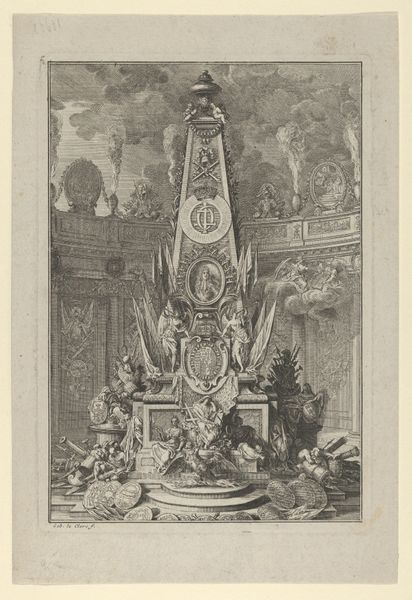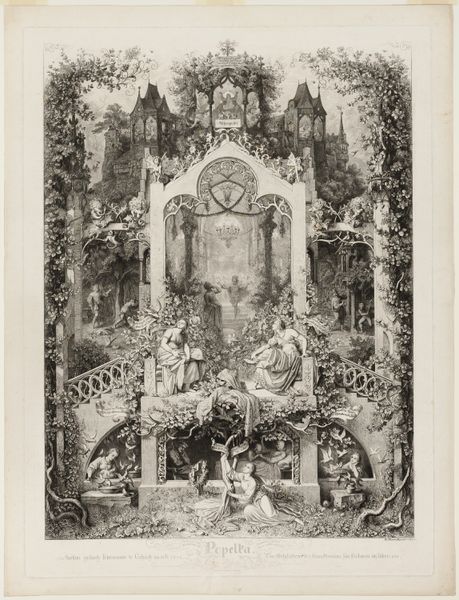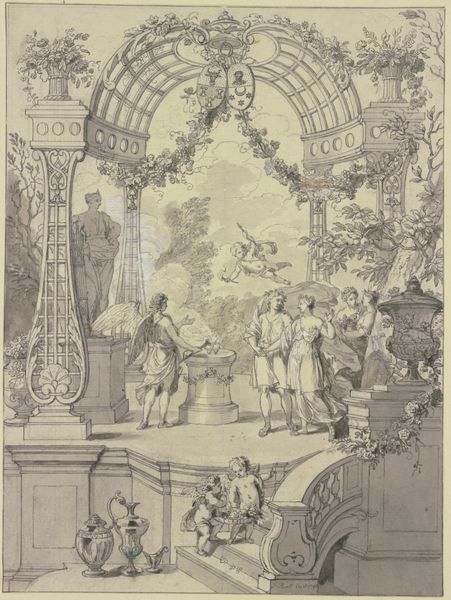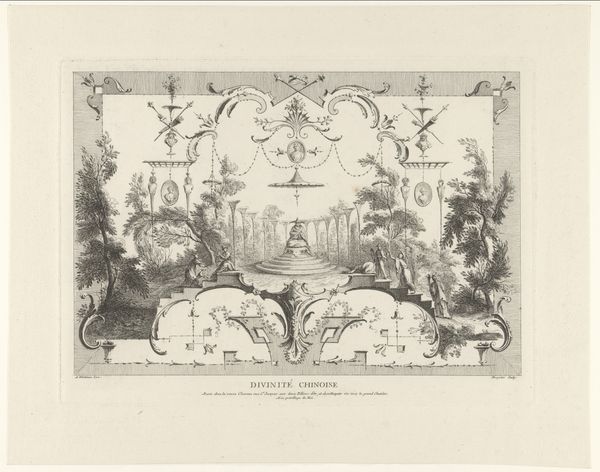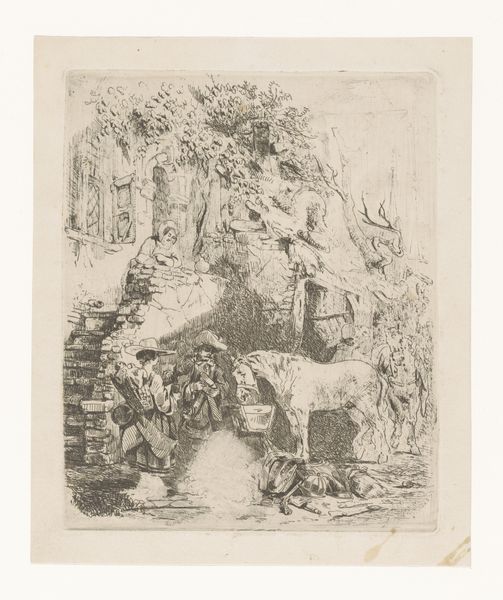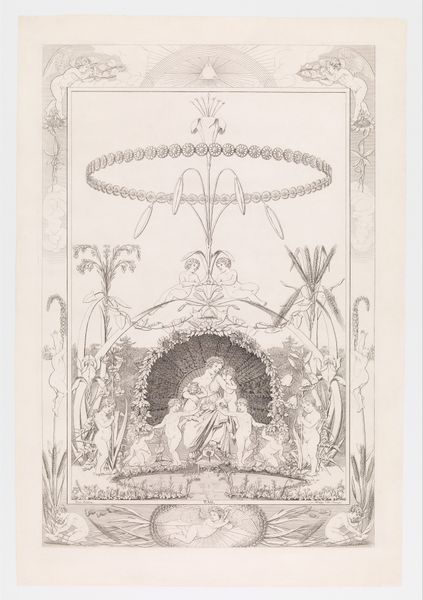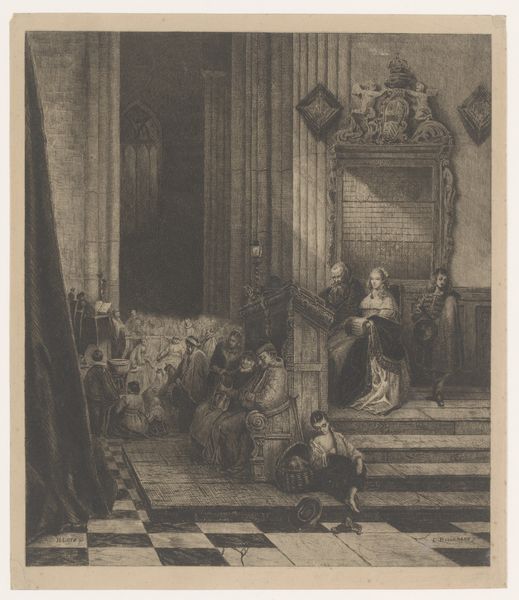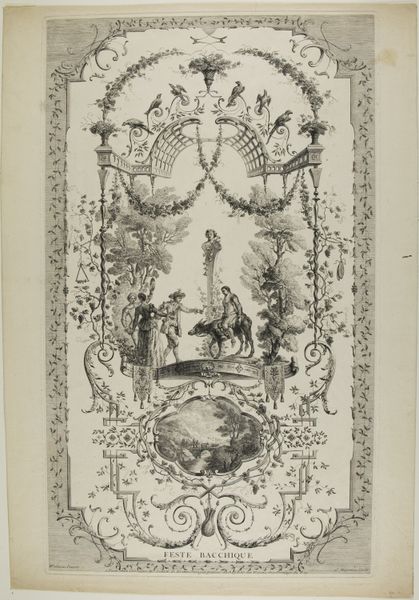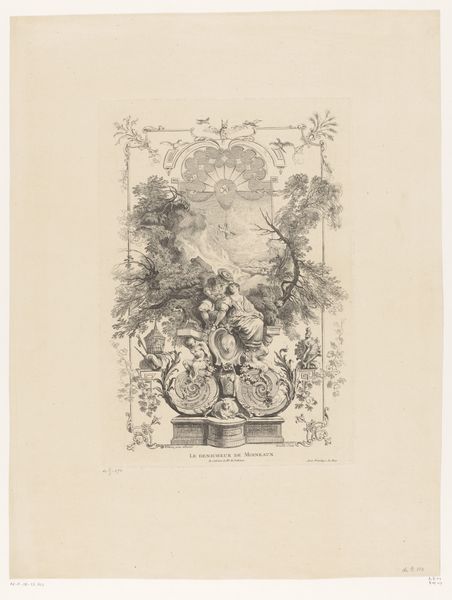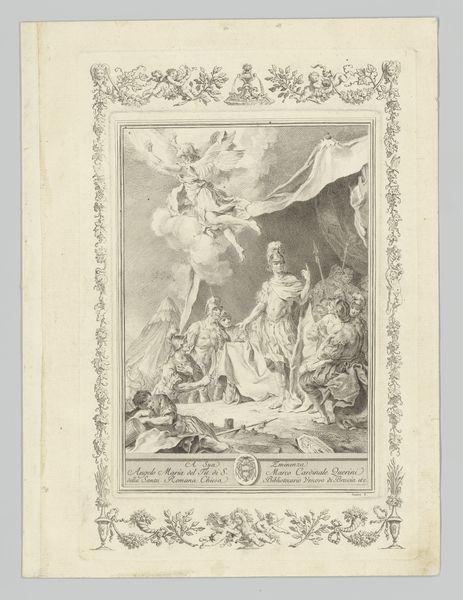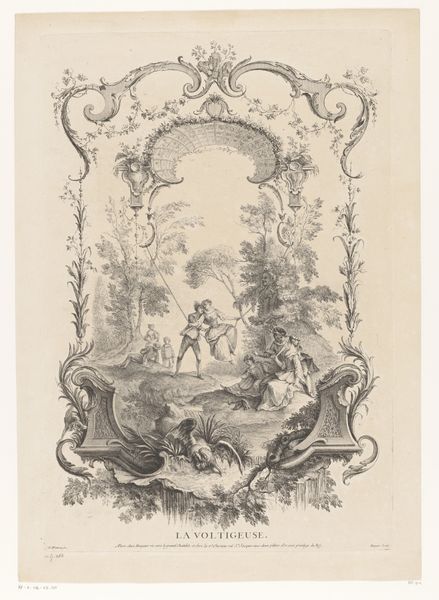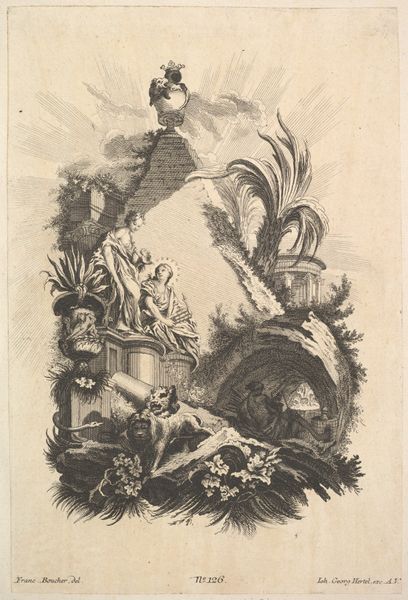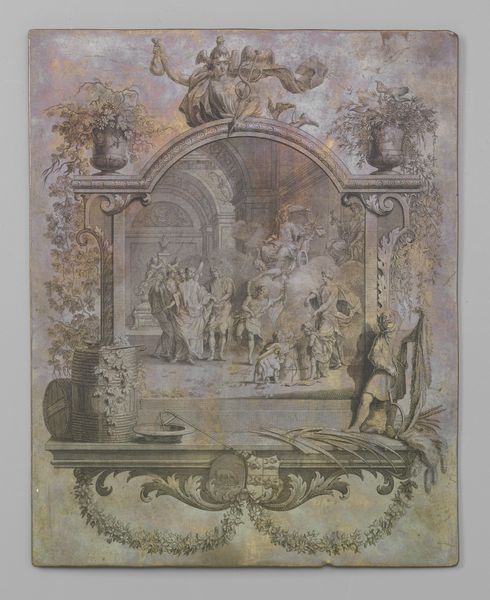
Dimensions: 23 1/16 x 13 7/8 in. (58.58 x 35.24 cm) (plate)28 3/8 x 18 1/2 in. (72.07 x 46.99 cm) (sheet)
Copyright: Public Domain
Félix Bracquemond etched this King David, and in its composition, the symbols of power and divinity intermingle. We see David, crowned and enthroned, attended by an angel, symbols of divine approval and kingship. Consider the crown. It signifies not only royal authority but also a connection to the divine, a motif stretching back to ancient Near Eastern art and resurfacing in countless forms throughout history. We see echoes in the halos of Byzantine emperors, affirming their divinely ordained rule. Yet, the crown's meaning shifts. Once a symbol of power and legitimacy, it becomes a token in the Renaissance, embodying secular authority, and later, in Romanticism, perhaps a burden of responsibility. The persistence of the crown speaks to a deep-seated human need to visualize authority and order. These images carry not just historical weight, but also a psychological resonance, tapping into our collective memory and subconscious associations. The crown, like all powerful symbols, engages us on a profoundly emotional level.
Comments
minneapolisinstituteofart almost 2 years ago
⋮
Authors Oscar Wilde and Marcel Proust loved Gustave Moreau's strange, mystical paintings. His 7-foot-high King David, unveiled at the 1878 Paris World's Fair, reflected Moreau's concerns about rising secularity after the Paris uprisings of 1871. In this velvety etching, the weary king ponders his fallibility and what Moreau called "the emptiness of life." Broken flowers all around, an angel takes up David's lyre in a sign of hope. This rare impression on vellum is the print Félix Bracquemond inscribed to Moreau.
Join the conversation
Join millions of artists and users on Artera today and experience the ultimate creative platform.
